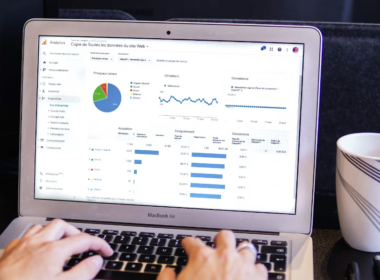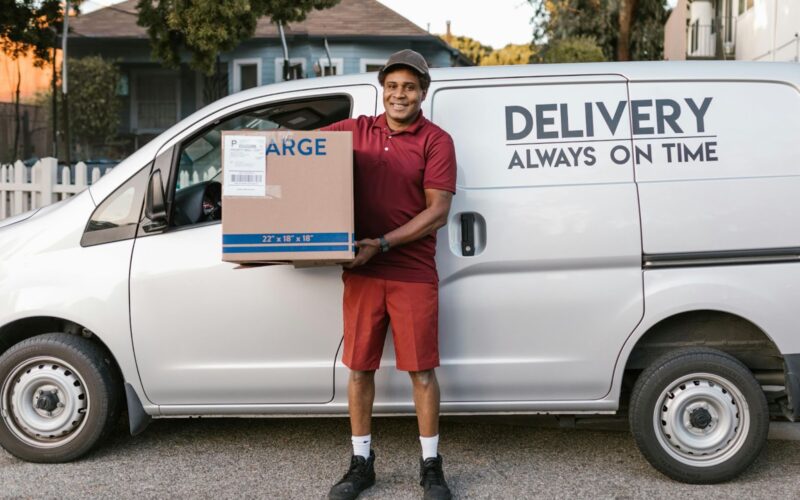Imagine e-commerce as a performing orchestra, logistics is its conductor.
The logistics industry is the train that connects trade and development globally. Without it, businesses, consumers and nations will stop moving and the world’s economy will plunge into almost total darkness.
To understand the size of the logistics industry, here’s this statistic – the global logistics market size accounted for USD 7.98 trillion in 2022 and it is expected to be worth around USD 18.23 trillion by 2030 with a noteworthy CAGR (compound annual growth rate) of 10.7% from 2023 to 2030.
With the rise of e-commerce fuelled by increased internet connectivity across the world and consumer demands for efficient, personalized and faster deliveries, traditional logistics is increasingly falling behind in this intricate never-ending race of supply and demand.
In this blog article, we will examine the key challenges of traditional logistics. We will also show how technological solutions like automation, artificial intelligence and blockchain can revolutionize how goods are moved and managed to meet customer demands of precision, speed, and adaptability.
Unlocking key challenges in traditional logistics
Delving into the world of traditional logistics reveals hurdles that must be overcome with system migration driven by smarter business tech solutions to achieve enhanced performance.
They include:
- Inefficiencies in manual processes,
- Lack of real-time visibility, and
- High operational costs.
Inefficiencies in manual processes
From inventory management to order fulfilment, the reliance on human intervention introduces inefficiencies.
These inefficiencies are manifested in:
- Human errors,
- Delivery delays and
- Difficulty in scaling to fluctuating demand and growing business volumes.
Lack of real-time visibility and information
The inability to track shipments and monitor inventory in real-time has created blindspots in the supply chain.
The consequences include:
- Inability to track shipments in real time,
- Limited insights into inventory levels and locations,
- Challenges in predicting and proactively addressing logistic issues,
- Delays in responding to customer inquiries, and
- Inability to provide accurate shipment ETAs (expected time of arrival) to customers.
High operational costs
Driven by manual labour, inefficiencies, and a lack of optimization, high operational costs impact profit margin.
Also, they hinder the industry’s ability to provide cost-effective and competitive services. The consequences include:
- Increased risk of labour-related errors because of heavy reliance on manual labour
- Limited scalability without significant cost implications
- Inefficient resource utilization due to a lack of visibility
- Increased expenses in responding to logistical disruptions
Revolutionizing warehousing: the rise of automation and robotics
The integration of automation and robotics in warehousing is key to reshaping traditional practices and enhancing operational efficiency.
This seamless blend of technology and logistics has key components including:
- Automated storage and retrieval Systems (AS/RS) for vertical racking systems and automated retrieval mechanisms.
- Conveyor systems for moving goods with speed and accuracy within the warehouse.
- Warehouse management systems (WMS) for centralized control, real-time visibility and efficient orchestration of tasks and resources.
- Autonomous mobile robots (AMRs) for warehouse space navigation.
- Pick and place robots to accurately fulfil customer orders and reduce errors in the picking process.
- Drones for inventory monitoring.
Benefits of automated warehousing solutions
The combination of automation and robotics in warehousing yields multiple benefits.
They include:
- Operational efficiency,
- Enhanced accuracy reliability, and
- Scalability and adaptability.
Sustainability initiatives in logistics
There’s a huge shift in the logistics industry towards sustainability, eco-friendlies and reduction of carbon footprints.
Smart business tech solutions are leading this charge by adopting eco-friendly technologies.
This adoption involves:
- Electric vehicles and intelligence battery management system integration.
- Renewable energy solutions for powering logistics operations and establishing energy-efficient warehouses and distribution centres.
- Innovative and sustainable packaging materials.
Reducing carbon footprint through smart logistics
Logistics needs to become sustainable.
To do so, there must be:
- Optimized Route Planning using intelligent AI algorithms
- IoT-Enabled devices for real-time Supply Chain Visibility
- Collaborative Shipping Solutions among multiple stakeholders
Case studies on sustainable logistics practices
Real-world logistical brands are actively driving sustainable logistics.
They include:
- Amazon’s sustainable packaging initiative is to use 100% recyclable packaging materials while reducing waste and setting industry standards for sustainable packaging.
- UPS’s electric vehicle fleet transitioning to an electric vehicle fleet for last-mile deliveries while demonstrating the feasibility and benefits of large-scale EV adoption.
- Maersk’s carbon-neutral pledge is to achieve carbon-neutral shipping by 2050 while investing in green technologies and sustainable practices to transform the maritime industry.
IoT and real-time tracking revolutionizing logistics
The addition of the Internet of Things (IoT) and real-time tracking for shipment tracking and supply chain ushers in a new era of visibility, transparency, and efficiency.
IoT devices in logistics include:
- GPS-enabled trackers to pinpoint the exact location of shipments while continuously monitoring for route optimization and security.
- Smart sensors for monitoring environmental conditions during transit.
- RFID Technology facilitates efficient inventory management by automatically identifying and tracking individual items.
Benefits of infusing IoT into logistics
The combination of IoT devices and technologies into logic provides never-before-seen visibility of the supply chain to key stakeholders.
The benefits include:
- Real-time data streaming to key decision-makers.
- Blockchain integration for transparent records of each step in the supply chain
- Predictive analytics of possible disruptions and bottlenecks.
Case studies on successful IoT implementation
The success stories of IoT implementation in logistics are amazing.
These case studies include:
- Maersk Line: Leveraging IoT for real-time tracking of shipping containers resulting in a significant reduction in transit times and improved container security.
- FedEx SenseAware: Implementing IoT sensors for monitoring sensitive shipments and enhanced visibility and real-time alerts for customers.
- Walmart’s Food Traceability: Utilizing blockchain and IoT to trace the origin of food products and ensure food safety and quality throughout the supply chain.
Artificial intelligence in route optimization
Artificial Intelligence (AI) is reshaping how routes are planned, schedules are optimized, and resources are allocated.
AI algorithms are now been used for:
- Intelligent route planning,
- The optimization of delivery schedules and routes, and
- The substantial cost and time savings are ushered in by AI-driven logistics.
AI algorithms for intelligent route planning
AI algorithms are being used for logistical smart navigation.
Their applications include:
- Machine learning algorithms for continuous learning from historical data for dynamic route adjustments and adapting to real-time traffic, weather and road conditions
- Predictive analytics for anticipating demand patterns, adjusting routes proactively, minimizing delays and ensuring timely deliveries.
- Clustering and pattern recognition for identifying optimal delivery zones and grouping destinations logically plus streamlining routes for enhanced efficiency.
Optimization of delivery schedules and routes
AI algorithms are been used for precision in planning.
Their applications include:
- Dynamic scheduling for real-time adjustments to accommodate new orders or unforeseen disruptions and maximizing the utilization of resources.
- Multi-objective optimization by balancing factors like fuel efficiency, delivery windows, and vehicle capacity.
- Scalability by adapting route optimization strategies to accommodate varying fleet sizes and the evolving needs of growing logistics operations.
Cost and time savings benefits of AI-driven logistics
AI-driven logistics helps save costs and time.
The benefits include:
- Fuel efficiency and environmental sustainability through minimized carbon footprints.
- Reduced operational costs with efficient resource allocation.
- Enhanced customer satisfaction through timely delivery and accurate ETAs.
Blockchain for secure and transparent logistical transactions
Blockchain is reshaping the dynamic fields of commerce and logistics.
Logistical concepts of verifiable trust, secure transactions and transparency are now practicable by:
- Immutable ledgers which are resistant to alteration or tampering.
- Decentralized architectures reduce vulnerabilities of central points of control and distribute transaction validation across the network.
- Smart contracts with predefined rules for transactional automation eliminate the need for intermediaries and reduce the risk of fraud.
Enhancing Transparency in Supply Chain Operations
With blockchain technology in logistics comes crystalline visibility.
This grants:
- End-to-end traceability and information,
- Real-time updates on inventory, shipments, and transactions, and
- Supplier accountability
Case studies of successful blockchain integration in logistics
Brands like Walmart are using blockchain to trace the origin of food products thereby enhancing food safety and reducing response time to recalls. Also, IBM Food Trust built a decentralized food supply chain network using blockchain and empowered its participants with real-time data for informed decisions.
Data analytics for informed decision-making
In the intricate business of logistics, where every thread of data weaves a narrative, the role of data analytics is critical for informed decision-making.
Data analytics in logistics uses the power of precision to:
- Create a data-driven decision culture,
- Descriptive analytics of historical datasets, and
- Diagnostic Analytics of trends and anomalies.
Predictive analytics in demand forecasting for logistics
The combination of logistics and data analytics helps anticipate tomorrow.
It uses:
- Utilizing predictive analytics to forecast future demand patterns.
- Machine learning algorithms for accurate predictions and adapting to evolving market dynamics and consumer behaviour.
- Scenario planning by simulating various scenarios to prepare for potential market shifts and proactively positioning the business to navigate uncertainties.
Improving logistics decision-making processes with data-driven strategies
With data analytics in logistics comes strategic steering at the management level which leads to:
- Real-time analytics into operational metrics,
- Integration with decision platforms, and
- Continuous learning loop.
Emerging trends in logistics technology
Every day, new amazing technologies are emerging to redefine logistics and seamless integration of AI, IoT, and blockchain for comprehensive solutions.
Smarter business tech solutions on the horizon include:
- Autonomous Vehicles and Drones for efficient last-mile deliveries.
- Augmented Reality (AR) in Warehousing with AR-powered smart glasses
- Predictive Analytics for Demand Forecasting
- Hyperloop technology for high-speed and sustainable freight transportation
- 5G connectivity for faster and more reliable global communication across the supply chain.
- Robotics for complete warehouse automation
How smarter business tech solutions are transforming Logistics
Very soon, the days when manual processes and inefficiencies plagued traditional logistics will be over.
A technological revolution where automation rules warehousing and inventory management, IoT guides and lights up parcel tracking and supply chain visibility.
Also, AI algorithms and intelligence battery management systems will take over delivery vans and blockchain will secure logistical transactions and ensure full transparency in the logistics industry.
It’s time for businesses to embrace smarter tech solutions in logistics that result in efficiency, innovation and sustainability. The tech solutions to age-long traditional logistics challenges are here, let’s use them.

















